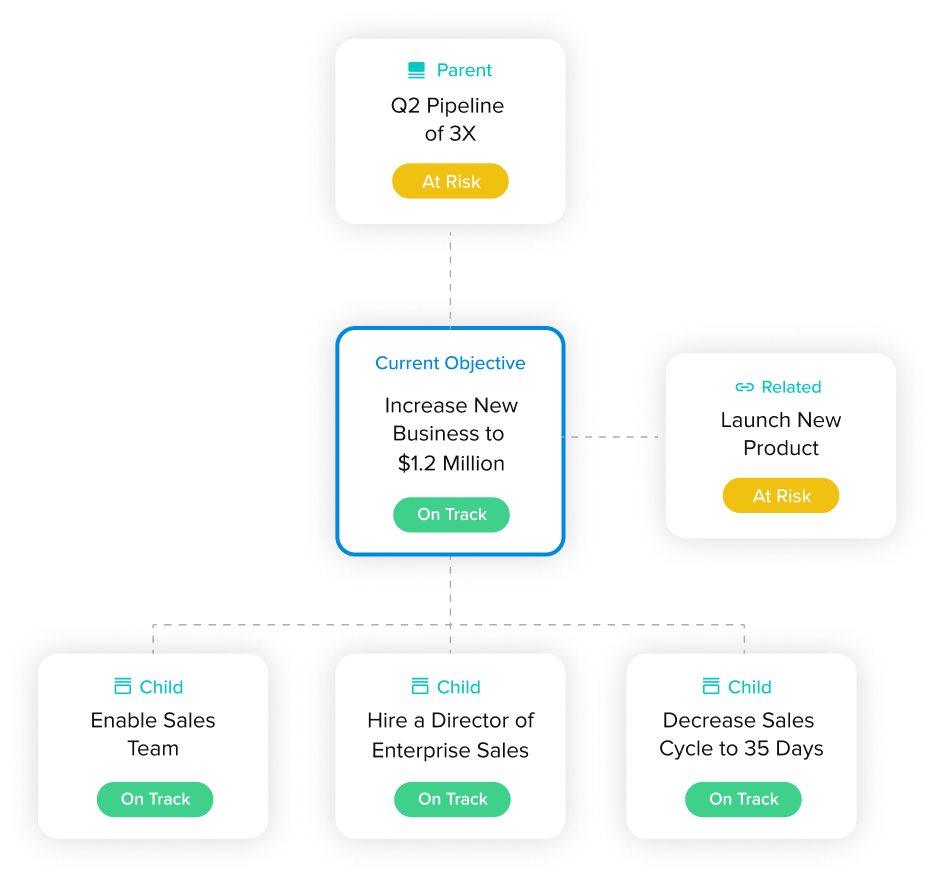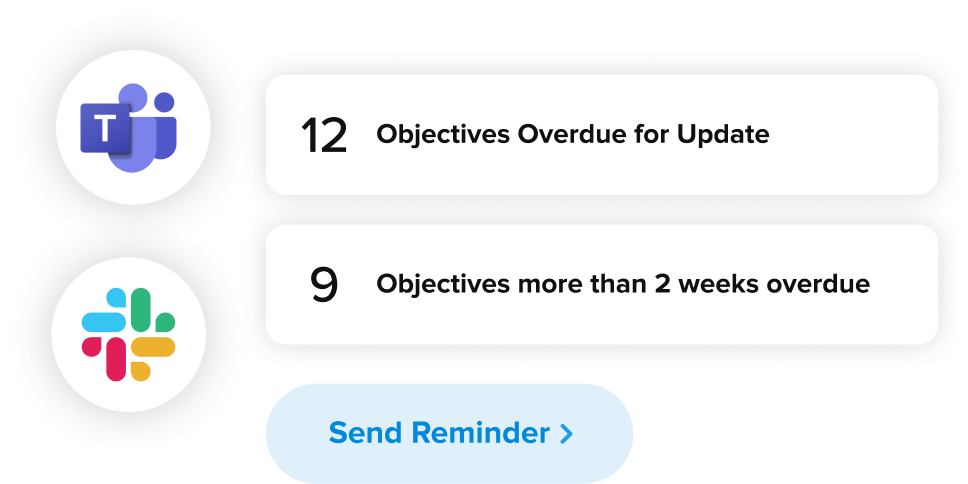What Are Strategic Planning Techniques?
Creating alignment and visibility across a business is harder than ever before. But doing so can serve as a competitive advantage for how your company scales and differentiates from competitors. To bring this to life, executives must create a strategic plan for how to accomplish their goals, both long-term, and short-term, in a way that brings team members along for the journey. These plans will usually include details like the mission and values of the company, a clear vision for the future, and actionable steps to take to achieve them.
But when it comes time to sit down and make your plan, some leaders struggle with exactly how the practice of strategic planning should look within their company. One of the most effective ways is to use one (or adapt several) strategic planning techniques that can serve as a foundation for your company’s operating cadence and rhythms. These are frameworks that have been developed to give people a set process to follow. In this short guide, we’ll cover strategic planning tools and techniques, looking at why these techniques are helpful, what the most popular techniques are, and what tools you can use to carry them out to set your company up for success.
What Is the Importance of Planning Techniques?
Using a strategic planning technique is important for several reasons:
- Clarity - There are many different factors that go into planning for long-term goals. Without a framework to guide the process, it’s easy to get confused or go off on tangents. Using a set process gives clarity to what you should be thinking about and the specific steps you should take.
- Focus - Sometimes your strategic plan can get bogged down with urgent but non-essential initiatives. Other times you might include too many goals, bringing in extra information that isn’t needed. Using a strategic planning technique helps bring focus so that your plan is perfectly tuned to what matters most for your business.
- Efficiency - Time is money, and as a busy executive, you can’t afford to spend your working hours spinning your wheels and wading through a complicated and drawn-out planning process. Using a planning technique helps you stay as efficient as possible.
- Alignment - Strategic planning often requires input from many different parties. Using a framework helps everyone involved stay on the same page, understanding exactly how the process should proceed.
What Are the Basic Techniques of Planning?
There are many different techniques of strategic planning, so let’s take a quick look at three of the most basic: the SWOT Analysis, Balanced Scorecard, and Objectives and Key Results (OKRs).
SWOT Analysis
Strengths, Weaknesses, Opportunities, and Threats are the four areas that make up this acronym. By examining both the positive and negative aspects of your business, you can create a strategic plan to maximize the potential of your company. When using SWOT, you’ll find yourself answering questions related to each area, like:
- Strengths: What are our assets? What makes our company stand out over our competitors?
- Weaknesses: What areas need to be improved? Are we understaffed or lacking resources?
- Opportunities: What needs are our competitors not meeting? What are the trends in our industry?
- Threats: Is our team satisfied and committed to this company? Is our website and company data secure?
Whatever the questions, the process of going through and examining each of these areas will help you create a meaningful, actionable strategic plan.
Balanced Scorecard (BSC)
“What you measure is what you get,” according to Robert Kaplan and David Norton, the creators of the balanced scorecard. This technique provides a way to look at four perspectives to create a “balanced” high-level view of performance. Using BSC, you can communicate your goals effectively, create alignment for working towards those goals, and measure and monitor your progress.
The four perspectives that BSC examines are:
- Financial stewardship - Considering how the company uses financial resources.
- Customer/stakeholder - Looking at performance from the perspective of customers and key stakeholders.
- Internal process - Examining the quality and efficiency in internal workflows.
- Organizational capacity - Encompasses the resources that impact growth, like human capital, infrastructure, and culture.
As the name suggests, the balanced scorecard is a well-rounded approach to strategic planning.
Objectives and Key Results (OKRs)
Developed at the computer company Intel, this framework was quickly adopted by other tech companies, in part due to its simplicity. All you need to do is choose an objective and identify three to five key results. It’s important that the key results are easily measurable so that you are able to determine success. For example, let’s say that your objective is to grow your business. The three key results might be:
- Increase revenue to $4 million within a two-year period
- Create and launch a new product line
- Reduce customer churn by 10% annually
Each of these key results is easy to measure and give a clear picture of your company’s growth—more revenue, expanded offerings, and increased customer retention. In general, you should aim for about 70% success rates, since 100% results often mean that the goals were not ambitious enough.
What Are Strategic Planning Tools?
Strategic planning tools are what you use to create and carry out your plan. A tool can be as simple as a piece of paper and pen or a solution that streamlines the process and drives higher engagement throughout the company. Here at Elate, we focus on helping companies build, execute, and review their strategic plan to unlock growth across their business. You might even say that we wrote the playbook on strategic planning!
Don’t just take our word though—when looking for a strategic planning platform to elevate your current process, you should be focused on a solution that provides the following features:
- Unified view of execution that ensures your team isn’t operating in silos, but instead operating from the same strategy.
- Seamless alignment of your company's vision with relationships that allow for effective execution of your plan.
- A dynamic planning space where you propose, review, and finalize your team’s objectives and key initiatives that drive success.
With Elate, you’ll find the leading strategic planning software that brings your strategic plan to life. No matter what technique(s) you use, you can easily communicate your vision, create alignment, and track performance all in one place. Ready to see Elate in action? Try a free demo or contact us today to take your strategic planning to the next level.




























